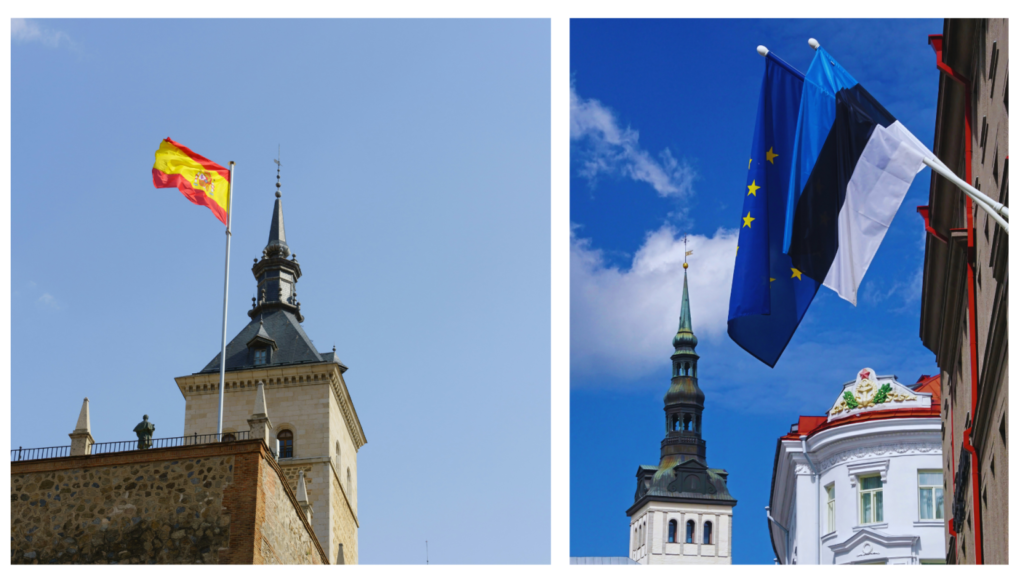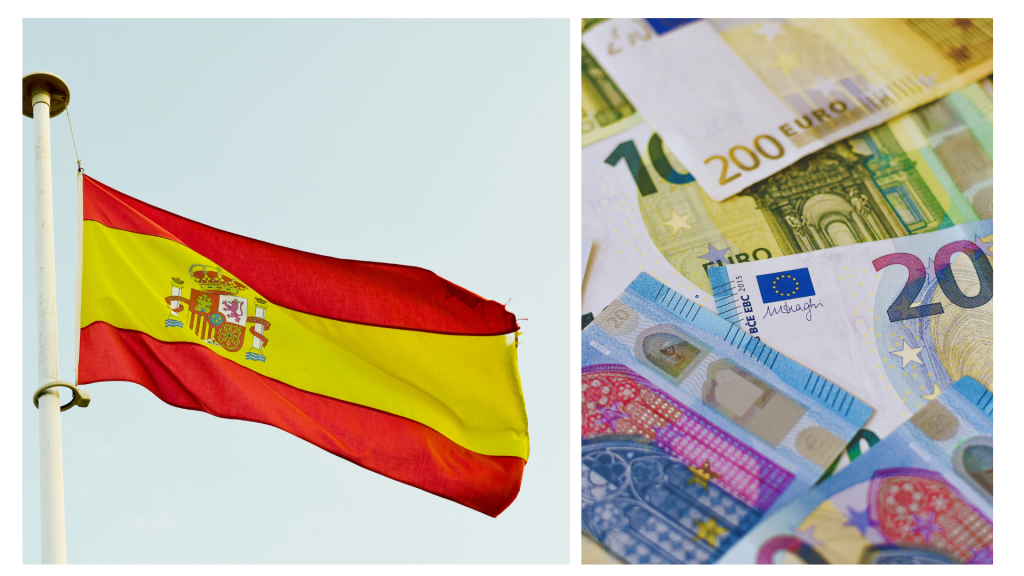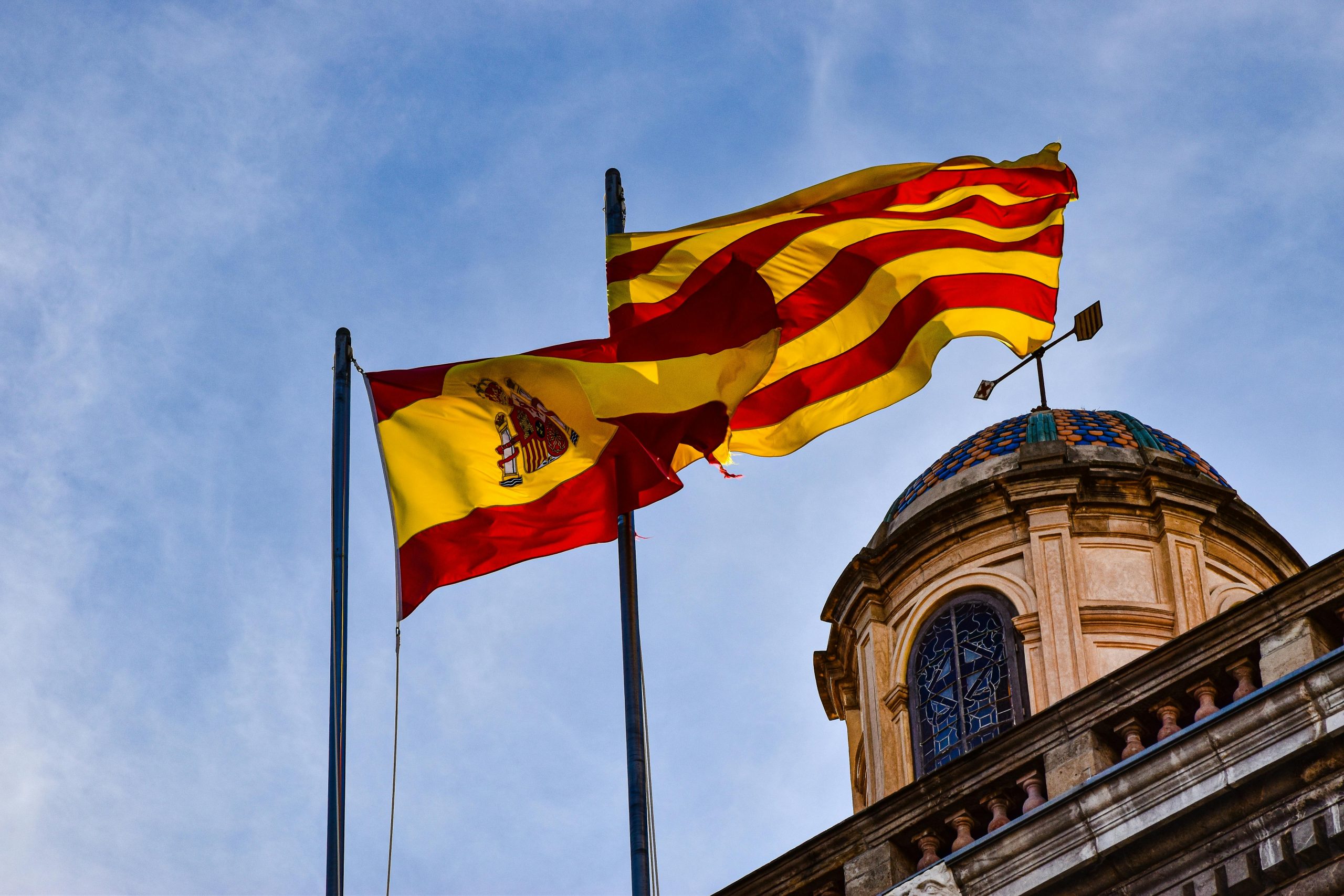Taxes in Estonia vs Spain: Which should I pay?
Explore taxes in Estonia vs Spain with Holafly and discover where it’s better to pay taxes.
When planning to live in a country for an extended period, a common question arises: Should I pay taxes? Estonia vs. Spain are two European countries that, although both belong to the European Union, have very different tax systems, including the types of taxes and corresponding rates.
In this review, we will guide you through the tax characteristics of both countries, detailing the tax implications and responsibilities you will face as an individual or legal entity if one of these two countries is your next destination.
Taxes in Estonia vs. Spain
If you plan to live or start a business in Estonia or Spain, you need to know that the tax implications are different, even though both belong to the European Union.
In Estonia, the tax system is characterised by simplicity and a focus on facilitating investments. The tax rate is a flat 20% annually, encouraging reinvestment, and social security contributions for businesses are lower.
In Spain, taxes range from 19% to 47% annually depending on the taxpayer’s income level.
| Similarities | Differences |
| Standard VAT: 20% in Estonia and 21% in Spain. | Estonia: Simple and digitalised tax processes. It maintains a flat tax rate of 20%, while Spain has a progressive and complex tax system. Tax rates range from 19% to 47%, depending on the income generated. |
Tax system features in Esronia vs. Spain

Corporate Taxes in Estonia vs. Spain
Personal Income Tax (IRPF)
Estonia has a flat tax rate of 20%, meaning that all taxpayers pay the same percentage regardless of their income level. This system is simpler and more predictable.
In Spain, IRPF is progressive, with rates ranging from 19% (for incomes above €13,000 ($14,200)) to 47% (maximum rate for incomes above €60,000 ($65,500)), meaning that individuals with higher incomes pay a higher percentage.
Corporate Tax in Estonia vs. Spain Spain
As mentioned earlier, Estonia has a fixed tax rate of 20%, which applies to both companies and legal entities. This benefits companies by allowing them to reinvest profits without additional taxes, promoting internal growth and capital accumulation.
Spain, on the other hand, applies a general rate of 25% on annual profits, including those that are reinvested. This can be more challenging for businesses seeking to maximise profit retention.
Economic Activities Tax (IAE)
In Spain, businesses are subject to additional charges such as the Economic Activities Tax (IAE), which applies to businesses based on the type of activity and income generated.
This tax is mandatory for businesses with net annual income exceeding €1,000,000 ($1,090,000), and the rate varies based on the type of economic activity and location. Municipal taxes can also increase the overall tax burden for businesses.
Estonia maintains a simpler and lower-cost tax structure. Businesses are exempt from specific local taxes and there is no direct equivalent to the IAE. Social security contributions in Estonia are lower, reducing labour costs and encouraging hiring.
This simplified and lower-tax burden approach in Estonia allows small and medium-sized businesses to operate with lower costs compared to Spain, making the tax environment more favourable for new businesses seeking financial efficiency.
Business Setup Benefits
Estonia is well-known for its e-Residency system, which allows entrepreneurs from anywhere in the world to establish and manage a business entirely digitally.
This model is especially advantageous for startups and digital nomads who value flexibility and remote management.
In Spain, there are incentives and support programs for SMEs and startups, but the process of setting up a business typically involves several in-person bureaucratic procedures and higher social security contribution rates, which may extend the time it takes to start operations.

Taxes for individuals or natural persons
So far, in the Estonia vs. Spain taxes comparison, the Estonian tax system appears to be more suitable for legal entities and businesses looking to invest and expand their operations.
VAT in Estonia vs. Spain
The Value Added Tax (VAT) is an indirect tax paid on the consumption of goods and services. In Europe, for example, the VAT rate varies by country; however, it is based on a standard rate and guidelines set by the European Union.
In Estonia, the general VAT rate is 20%, which applies fairly uniformly, but there is a reduced rate of 9% for certain essential materials used in product manufacturing or for providing services, such as medicines, books, hotel services, or medical supplies.
In Spain, VAT is just slightly higher than in Estonia at 21%, but Spain has varying reduced rates: 10% for certain foods and services and an even lower rate of 4% for essential products, such as food, medicines, and books.
Important: If you are a frequent traveler and want to stay connected without worrying about expensive roaming or looking for a new SIM at every destination, Holafly’s subscription plans are for you. With a single eSIM, enjoy internet in more than 160 countries for a fixed price and no surprises on your bill. Travel without limits and connect easily and securely! 🚀🌍

Other Taxes in Estonia vs. Spain
Wealth Tax in Estonia and Spain
Estonia
In Estonia, there is no Wealth Tax as there is in other European countries. This tax is common in many EU countries, but Estonia does not implement it.
Spain
The Wealth Tax in Spain is progressive, meaning the rate increases according to the net worth of the individual. The tax applies to personal assets and rights, with rates ranging between 0.2% and 3.5%.
People with assets worth over €700,000 ($765,000) are subject to this tax, with a minimum exemption that varies depending on the autonomous community.
Social Security Taxes in Estonia and Spain
Estonia
The Social Security system includes various contributions to health, pensions, and other social benefits.
In general, businesses must pay a 33% contribution on the gross salary of their employees, with 20% going to pensions and 13% to social security for health insurance, maternity, and other social benefits.
The social welfare level for residents is high, with an efficient and well-managed system.
Spain
In Spain, companies must contribute around 30 % of the gross salary of their employees, while self-employed workers must pay a fixed monthly fee ranging from €283 to €1,233 ($310 – 1,345), depending on their income.
Contributions include health insurance, pensions, unemployment, and other social benefits.
Inheritance and Donation Tax
Estonia
In Estonia, there is no such tax. Inherited or donated assets are not subject to a direct tax on their value.
Spain
In Spain, this tax varies depending on the autonomous community where you live. Rates range from 7.65% to 34%, depending on the value of the inherited or donated assets and the relationship between the deceased and the heir.
This tax can be very high, especially when the value of the inherited assets is significant.
Local Taxes in Estonia vs. Spain
Estonia
In Estonia, local taxes are limited as the tax system is centralised at the national level. However, there are some minor municipal taxes related to property ownership, though these are less common and less significant than in other EU countries.
Spain
In Spain, there are several municipal taxes that vary depending on the region or municipality. One of the most common is the Property Tax (IBI), which applies to property ownership (homes, commercial premises, land).
This tax can vary between 0.4% and 1.1% of the property value. There are also other local taxes such as the Vehicle Tax (IVTM) and municipal service fees.
Non-Residents Income Tax (IRNR)
Estonia
In Estonia, there is no standard Non-Residents Income Tax. However, if a non-resident earns income from Estonia, it will be subject to a 20% tax on dividends or profits.
This tax only applies to income generated directly from economic activities within the country.
Spain
In Spain, non-residents earning income within the country must pay a Non-Residents Income Tax with a rate of 24% on the income generated.
There are exceptions, such as income from dividends or pensions, which may be subject to a reduced rate depending on Spain’s international agreements with other countries.

Estonia vs. Spain: Where Do You Pay Less Personal Income Tax?
After reviewing and analysing the main tax responsibilities between Estonia vs. Spain, we can conclude that Estonia is a country whose tax system clearly focuses on supporting both individuals and legal entities, as well as fostering investment and the development of national and foreign economic activity within its territory.
Taxes in Spain, on the other hand, have a more restrictive and complex approach in terms of tax processes, which burdens individuals and businesses with higher assets and income, seeking social guarantees and efficient distribution of national revenue.
Tax Comparison Switzerland vs. Spain
To make it easier to compare the tax values and determine where it’s better to pay taxes in European countries like Estonia vs. Spain, here’s a table summarising all the previous information. This summary will help you understand the differences and advantages of the tax burden between both destinations for individuals and legal entities.
1. Taxes for Legal Entities (Companies)
| Tax Type | Estonia | Spain |
| Corporate income tax | 20% on profits (applies also to businesses) | 25% on annual profits, including reinvested ones |
| Economic Activities Tax (IAE) | 0% | Applies to businesses with income over €1,000,000 ($1,090,000); varies depending on activity and location. |
| Social security contributions | 33% on gross salary (20% for pensions, 13% for health) | Approximately 30% on gross salary for companies; self-employed workers pay fixed monthly fees |
| VAT (Value Added Tax) | 20%, with a reduced rate of 9% for certain goods and services | 21%, with reduced rates of 10% and 4% for essential products and some services |
Corporate taxes in Estonia vs. Spain Spain
2. Taxes for Individuals
| Tax Type | Estonia | Spain |
| Personal Income Tax (IRPF) | Flat 20% on all income | Progressive rate from 19% (above €13,000 ($14,200)) to 47% (maximum rate above €60,000 ($65,500)). |
| Tax on heritage | 0% | 0.2% – 3.5% based on net wealth value, with exemptions based on the autonomous community |
| Inheritance and Gift Tax | 0% | 7.65% – 34% based on the value of inherited assets and the relationship with the deceased |
| Social Security | 33% contribution on salary, with 13% for health and social benefits | Approximately 30% contribution for employees, with fixed monthly fees for self-employed workers ranging from €283 to €1,233 ($310 – 1,345). |
| VAT (Value Added Tax) | 20% with reduced rate of 9% for some products | 21%, with reduced rates of 10% and 4% for essential products |
Individual taxes in Estonia vs. Spain





 Language
Language 


















 No results found
No results found







